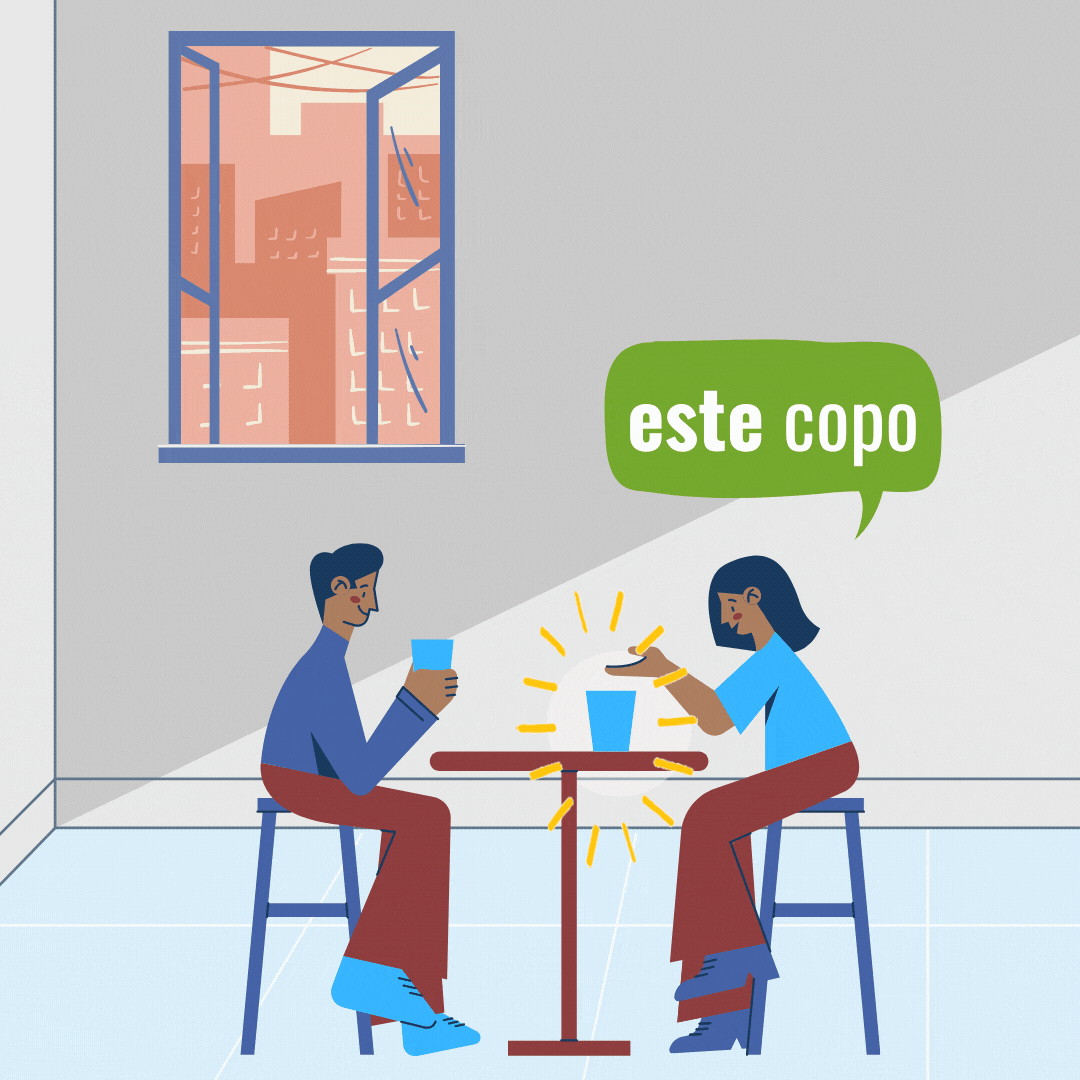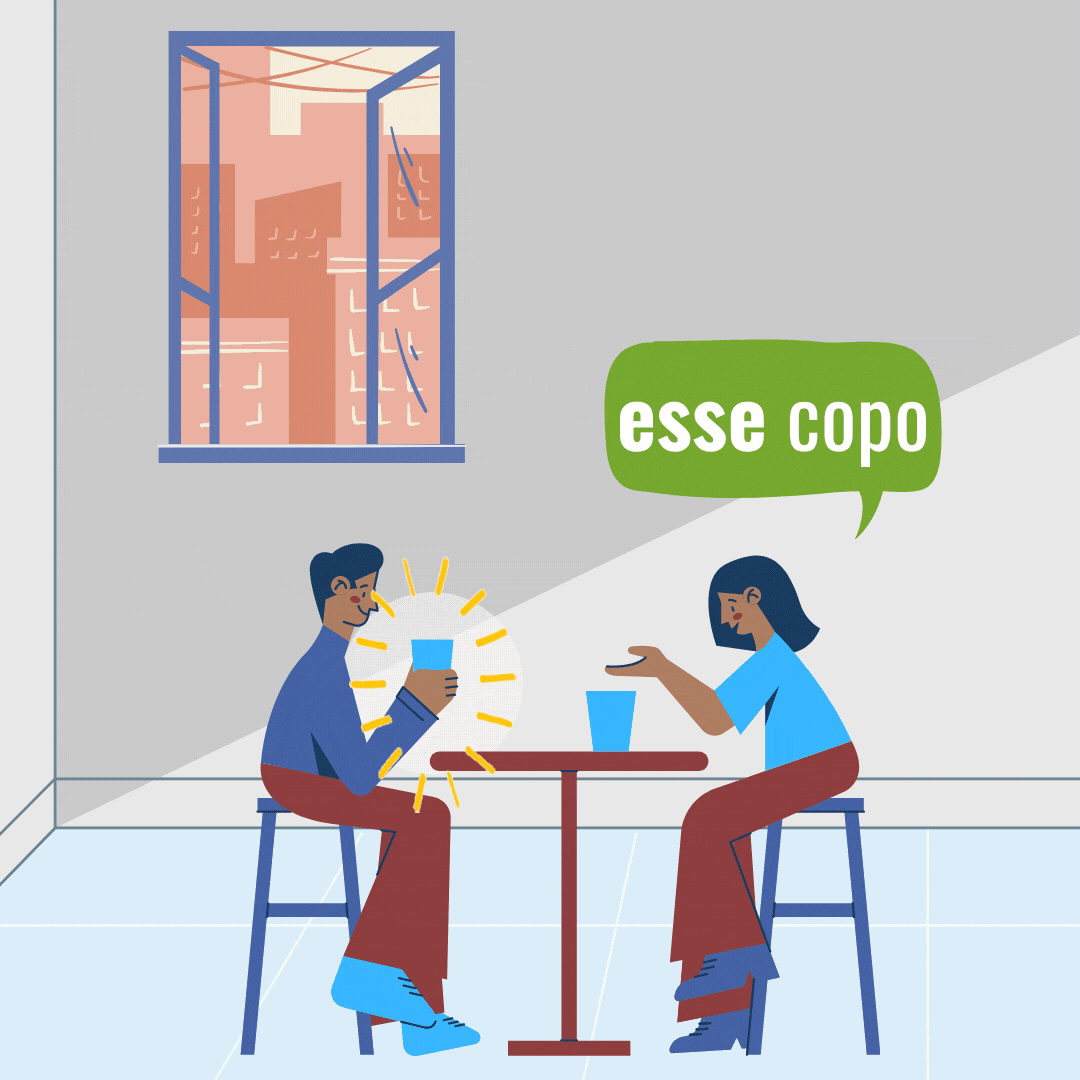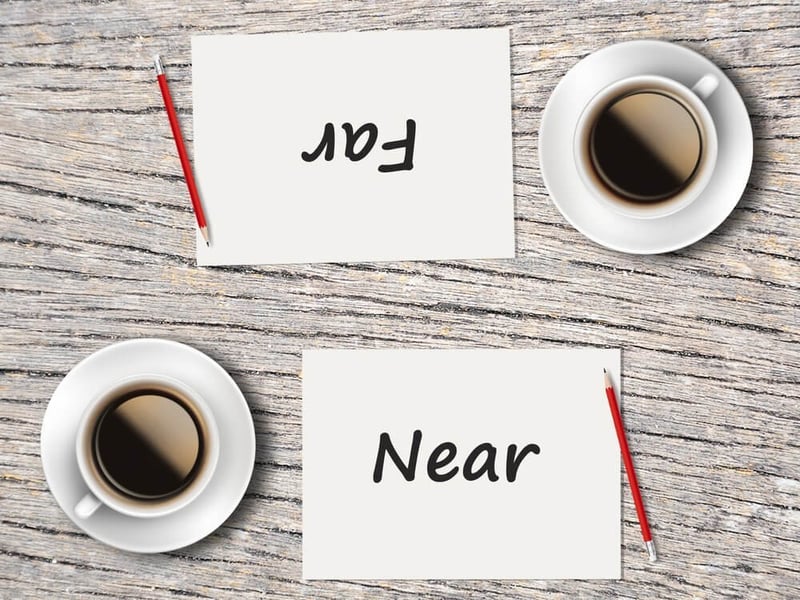As we mentioned, when you say this, that, these, or those in Portuguese, you have to be a little more specific…
Variable demonstratives are used to indicate all of the following at once:
- a person or object’s gender
- the number (one or more)
- the position in space or time
The gender and number part is pretty easy, because we’ve been applying similar rules in other aspects of the language. But the “demonstrative” part of this fancy name refers to the last point above, the item’s position. We must choose which word to use, according to which one of the following fits best:
- a) The object is near the speaker,
- b) The object is far from the speaker, but near the listener, OR
- c) The object is far away from both speaker and listener
As you may have realized, this doesn’t happen in English. You just have to choose between this and that. The position of the object relative to the speaker is the only thing that counts. In Portuguese, however, we have to think about where the object is in relation to the listener, too.
The variable demonstratives are:
- Near the speaker: estethis | estesthese | estathis | estasthese
- Near the listener: essethat | essesthose | essathat | essasthose
- Far from both: aquelethat | aquelesthose | aquelathat | aquelasthose
As you may have guessed, the ones ending in “e” or “es” refer to masculine items and the ones ending in “a” or “as” refer to feminine items. Note: We’ll cover invariable demonstratives in more detail later in this unit.
First, let’s review the variable demonstratives in the charts below, and then we’ll look at some examples.
Let’s Review…
Singular (This & That)
| Relative Position | Masculine | Feminine |
|---|---|---|
| Near the speaker: | estethis | estathis |
| Near the listener: | essethat | essathat |
| Far from both: | aquelethat | aquelathat |
Plural (These & Those)
| Relative Position | Masculine | Feminine |
|---|---|---|
| Near the speaker: | estesthese | estasthese |
| Near the listener: | essesthose | essasthose |
| Far from both: | aquelesthose | aquelasthose |



This & These (Near the Speaker)
Este(s) and esta(s) are used when we want to refer to someone or something that is close to you, exactly like how you would use this or these in English. For example, if you were shopping and noticed a beautiful watch next to you, you would say:
Este relógio é bom.This watch is nice/good.
Since relógio is a masculine, singular noun, you use the masculine, singular form: este.
If, instead of a watch, you were looking at a pricey t-shirt, you would use the feminine, singular form: esta, because t-shirt is a feminine word in Portuguese:
Esta t-shirt é cara.This t-shirt is expensive.
Now, imagine you’re shopping with a friend, who holds up a pair of shoes and says:
Estes sapatos vão bem com o teu fato.These shoes go well with your suit.
Let’s break this one down:
- Gender: Sapatos are masculine. If there was one shoe, we would start with “este” a masculine, singular variable demonstrative.
- Number: But since there are 2 shoes, we just add an “s”, resulting in “estes“.
- Location: Because the shoes are near the speaker, he says estesthese instead of essesthose or aquelesthose
That & Those (Near the Listener, or Far Away)
If your friend were to make a comment about the t-shirt or watch next to you, he wouldn’t use esta or este, because the objects aren’t close to him. However, since you, as the listener, are close to the items, he can use the pronouns esse or essa. He could say something like:
Quanto custa essa t-shirt?How much does that (near listener) t-shirt cost?
On the other hand, if either one of you wants to mention someone or something that is far away from both of you, the right pronouns to use would be aquele or aquela.
Viste aquela rapariga linda?Did you see that (far away) beautiful girl?
Now let’s say you continued your shopping trip at a furniture store. The following example is something you might say about the sofas that are right next to your friend, and the chairs that are far away, on the other side of the store.
Esses sofás são confortáveis, mas aquelas cadeiras não.Those sofas (near listener) are comfortable, but those chairs (far from both) are not.
Sofás are masculine and cadeiras are feminine.
European vs. Brazilian Portuguese
In the above examples, you can see that while both esse/essa and aquele/aquela translate to that in English, they are used in distinct situations. The case is different with Brazilian Portuguese, where esse/essa have come to mean the same as este/esta, both corresponding to the English this. So, Brazilians’ choice of demonstrative pronouns boils down to only esse/essa (this) and aquele/aquela (that).
Replacing the Noun
Variable demonstratives can be followed by the respective noun, like in the previous examples: este relógio, essa t-shirt, aquelas cadeiras, etc. However, once context is established, these same words can also be used as demonstrative pronouns, without the noun, to simplify and avoid repetition. For example:
Preferes este casaco ou aquele?Do you prefer this coat (near speaker) or that one (far from both) ?
Prefiro esse.I prefer that one (near listener) .
Since the context is known, it’s basically as if the noun is implied. The listener knows that when you say aquele you’re referring to aquele casaco. Note: In English, we often add the word “one” in these contexts, as in: “I want that one”. In Portuguese, this doesn’t happen.



Hello,
Do you have a video where you explain this with real life situations? That would help a lot, i guess.
best,
tobi
All clear to me !! I use this trick to see the differences:
Este/esta & isto contain “st” = near me
Esse/essa & isso contain “ss” = near listener
Aquele/aquela & aquilo contain “aq” = far from both
Yes! That works.
Thank you for giving such clear explanations of tricky grammar! I was always confused as to when to use isto or este ,etc.
Your clear explanation of the differences between demonstrative pronouns and demonstrative determiners made everything crystal clear for me.
Hello, I didn‘t really understand the difference between isto and este (and isso and esse).
It’s a tough concept because it’s all contextual. Here’s a simplified way to think of it:
THIS
este (masc.) / esta (fem.) – Use este or esta when the thing you’re referring to is known / specified / mentioned recently. Usually it comes immediately before the noun itself (“Esta casa” – “This house”), but there are also exceptions like “Esta é a casa deles”. This is fine because what you’re referring to is obvious. (Also in this case, “casa” appears shortly after in the sentence, so there’s no need to say it twice.)
isto (no gender) – Use isto when you’re referring to something unknown, or if you’re speaking in a more general or abstract way. You don’t put it before the noun. (❌ “isto casa” – incorrect)
THAT
Same specified/abstract distinction as above between esse/essa and isso. These options are used when referring to something that’s more distant (in space or time).
You’ll learn more throughout this unit. Don’t feel like you need to 100% understand it right away. In most cases, people will still understand you if you say “isto” instead of “este”, for example, and over time you will pick up the differences more.
While I understand the grammar I find it difficult to remember that “este” (and its siblings) is “this” and that “esse” is “that”. I’ve finaly started to use the logic that “s” comes before “t” (as in esSe/esTe), and “a” comes before “i” (as in thAt/thIs), so therefore esSe must match thAt, and esTe must match thIs.
When having plenty of time to think it through, e.g. when doing flash cards in front of the computer, it works. But it leads to some long awkward pauses when I’m trying to string a new sentence together.
Any other good ideas for how to get it into the head that “those ones with an ‘s'” are near the listener and “those ones with a ‘t'” are near the speaker?
Easy: T for Tomas (you are the speaker) ☺️
Perfect! I love it! ❤️